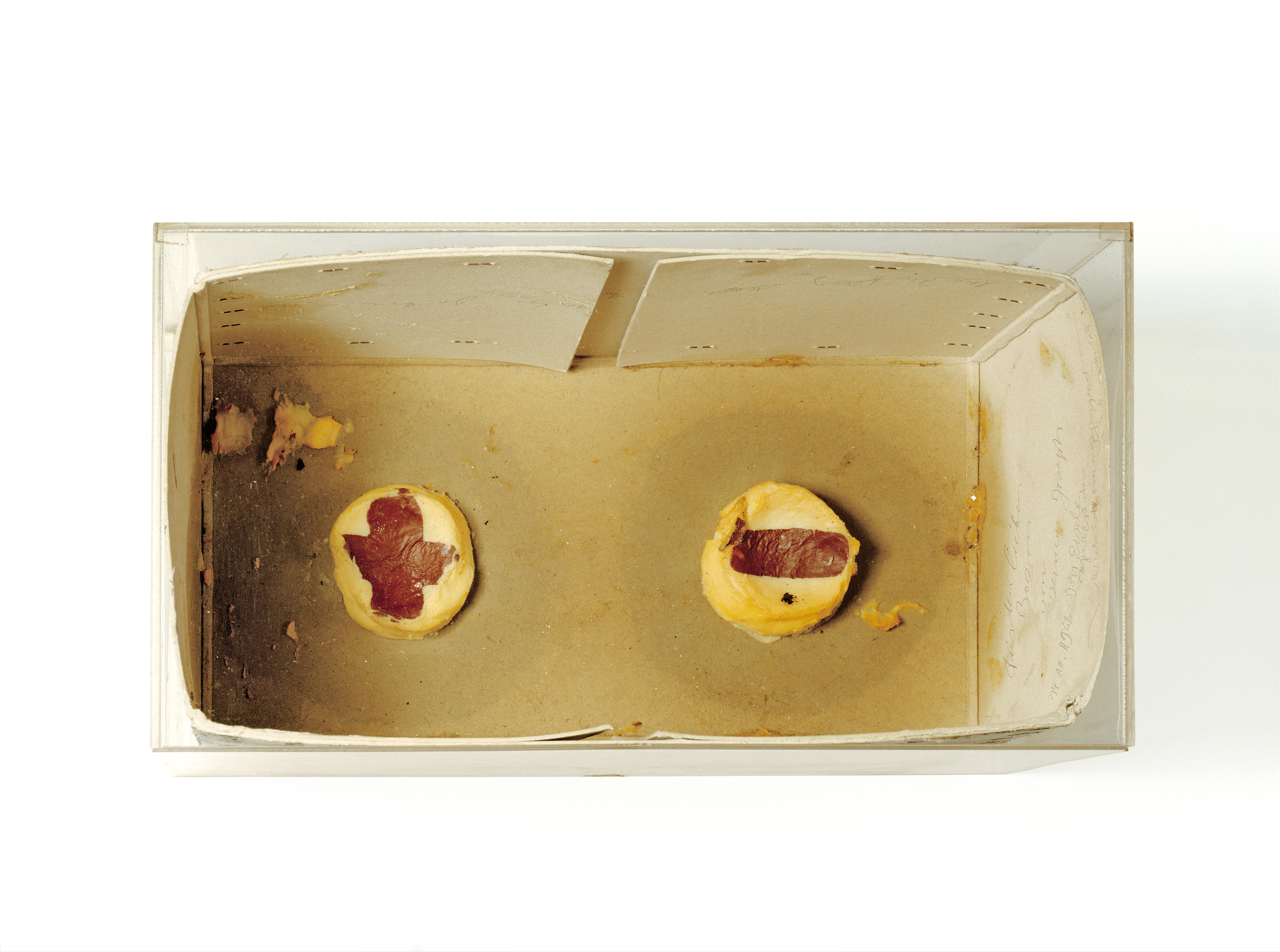Joseph Beuys
Wechselstromaggregat
1968
Oil (Braunkreuz) and pencil on card box with two round fat balls. Approx. 22 x 46.5 x 24.5 cm. Signed and inscribed 'dies ist der Originalzustand Joseph Beuys' on the side of the box. Signed, dated, titled, inscribed and with dedication 'für den lieben Bazon von seinem Joseph 14.10.1968 Don Eisele ... das Wechselstromaggregat 1,5 min - lass den Flug noch weitergehen' on the inside of the box. - With studio traces and minor traces of age.
Today, Joseph Beuys is considered one of the most significant artists of the post-war period. The distinctive feature of his work is his artistic endeavour to develop a synthesis of art and life. Coming from sculpture, he developed works in this sense which can be denoted with the artistic term “social sculpture.” Accordingly, Beuys was also politically active, but understood politics only as part of a comprehensive concept of art.
For the work “Wechselstromaggregat” [alternator] on offer here, Beuys used materials of everyday life which had not been considered for use in art until then. He used their unspent expressiveness and symbolic content to visualise his ideas of broadcasting and receiving, of the flow and storage of energy generated by the object (Andreas Kaernbach on https://www.bundestag.de/besuche/kunst/kuenstler/beuys/beuys-199208).
For “Wechselstromaggregat”, Beuys used a high cardboard box in the centre of which he positioned two lumps of fat parallel to one another. According to the function of a current generator, he wrote a plus sign in Braunkreuz (brown oil paint) on the one while inscribing a minus sign on the other. In the combination of materials, Beuys’ “Wechselstromaggregat” can be seen in the context of his critical stance on social and environmental policies. As part of a former large-scale performance, the installation symbolises the hope that the dualisms of East and West, or mysticism and materialism, would unite through art.
Beuys dedicated the work to his ”dear friend Bazon [Brock]“, the former professor for aesthetics and art theory at the University of Wuppertal, born in 1936. As an eloquent representative of the Fluxus movement, he had participated in artistic events and happenings together with Beuys.
Donn Eisele, American astronaut and pilot, launched Apollo 7 on October 11, 1968 for the first manned space flight into space.
Provenance
Private collection, Rhineland Palatinate
Exhibitions
Dusseldorf 1992 (Kunstsammlung Nordrhein-Westfalen), Joseph Beuys, Natur, Materie, Form, exhib.cat.no.372 with illus.

